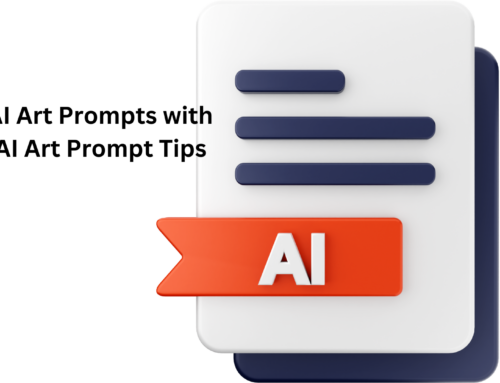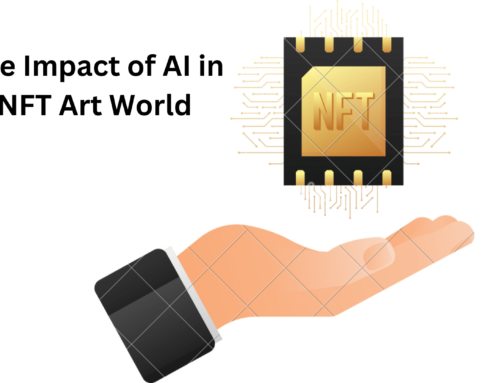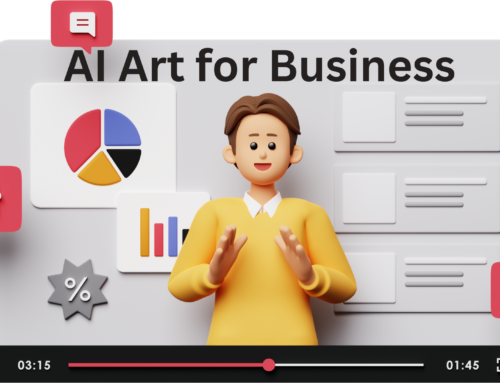Art has always been a powerful means of expression and storytelling. It allows us to convey our emotions, thoughts, and ideas in unique and beautiful ways. However, for many years, the world of art was often seen as exclusive, accessible only to a select few with the right connections or resources. Thankfully, times are changing, and today, accessibility and democratization of art creation are becoming increasingly important concepts.
What is Accessibility and Democratization of Art Creation?
Accessibility and democratization in the world of art refer to making art more available and achievable for everyone, regardless of their background, abilities, or resources. This involves breaking down barriers that have traditionally prevented many people from participating in the art world.
Enter the age of AI art: where creation knows no bounds. These tools redefine art for all, breaking down barriers of cost and skill. With a few keystrokes, anyone can tap into their artistic side, with no pricey supplies needed. AI art goes beyond, creating experiences tailored for those with disabilities.
Daisy Liang, the Sales Manager of KOYO Machinery, says,
“1. AI art generators can make art creation more accessible to people with limited resources, physical limitations, or lack of formal training. These tools provide an opportunity for individuals to express their creativity without the need for expensive art supplies or extensive technical skills. By simply inputting text prompts or descriptions, AI art generators can produce unique and visually appealing artwork.
2. AI art tools can be used to create personalized and inclusive art experiences for individuals with disabilities. These tools offer a range of features and options that can accommodate different accessibility needs. For example, individuals with limited mobility can use AI art generators to create digital artwork without the need for physical dexterity. Additionally, AI-generated art can be experienced through various mediums, such as interactive installations or immersive experiences, providing inclusive opportunities for individuals with sensory impairments.
3. To ensure that AI art generation technology remains affordable and available to diverse communities, it is important to avoid creating a new digital divide. Open-source AI art tools and models allow users to access and utilize these technologies without significant financial barriers. Many AI art generators offer free or low-cost options for users to create art. Additionally, promoting inclusivity in the development and design of AI art tools can help address the needs of different communities and ensure accessibility for all.
In summary, AI art generators democratize art creation by providing accessible and inclusive platforms for individuals with limited resources, physical limitations, or lack of formal training. These tools offer opportunities for self-expression and creativity, while affordability and inclusivity are key considerations to ensure accessibility for diverse communities.”

The Impact of AI on the Creative Process for Artists
Artificial Intelligence has undeniably reshaped the creative landscape for artists. By offering new tools, such as generative algorithms and deep learning models, AI has become a collaborator, augmenting and expanding the creative process. It provides artists with fresh perspectives, inspires unconventional ideas, and accelerates the execution of complex tasks. However, the impact of AI extends beyond mere assistance; it challenges traditional notions of authorship and creativity, sparking important conversations about the intersection of human ingenuity and machine intelligence in the world of art.
According to Abhishek Shah, The Founder of Testlify, “AI art generation has undeniably broadened the creative landscape for artists in two distinct ways. Firstly, it provides a novel source of inspiration by generating unique ideas and styles based on vast datasets. This exposes artists to unconventional concepts they may not have explored otherwise, sparking new avenues of creativity.
However, concerns arise regarding the originality of AI-generated art. AI, while proficient at mimicking styles and patterns, lacks the depth of human emotions and experiences. This can lead to a proliferation of superficially similar artworks, diluting the essence of human creativity.
To address this, artists should embrace AI as a tool rather than a replacement for their creativity. By using AI to augment their work, artists can maintain their distinctiveness and infuse AI-generated ideas with their unique human touch.
Key takeaway: AI art generation enhances creativity by offering fresh perspectives but raises concerns about originality. Balancing these aspects allows artists to harness AI’s potential while preserving the authenticity of their artistic expression.”
AI’s Transformation of Art and the Human Artist Roles.
Machine learning algorithms are like the secret sauce behind AI-powered tools that help artists explore their creativity in exciting new ways. By using millions of images as data to train, these algorithms open up unique artistic possibilities, even turning selfies into art. But it’s not all fun and games; there are ethical implications, like the use of non-essential cookies. Plus, the role of the artist in this new medium remains to be seen. Can anyone create art with AI-generated content? It’s pushing the boundaries of what we consider art, offering people who may not see themselves as artists the opportunity to explore and iterate on their creative aspects in one of the most exciting ways imaginable.
How MidJourney Transforms Art for Businesses?
You know, MidJourney is like a magic wand for businesses and art. It takes ordinary ideas and turns them into extraordinary art that grabs people’s attention. It’s like having your own Picasso or Van Gogh on speed dial! With MidJourney, businesses can create stunning visuals and designs that tell their story in a way that everyone can understand and connect with. It’s like giving your brand a superpower to stand out in a crowded world. So, if you want to transform your business into a visual masterpiece, MidJourney is the secret sauce you’ve been waiting for.
As per the insights shared by Hilary P Johnson, An Artificial Intelligence Enthusiast, and a Business Growth Coach, “We have been using MidJourney to create art for our businesses (social media, websites, newsletters, etc) and it’s really been a lot of fun. None of our internal team members are graphic artists, so it’s commonly something we would hire for, but it’s also something we don’t have a huge budget for. So by using MidJourney we can get creative and play with prompts that allow us to generate art that’s on brand, engaging, and honestly well beyond what we would have requested in a creative brief. It’s also fast and iterative, so we can get graphics that are amazing on the fly, while also iterating many many times until we get exactly what we want.”

Democratizing Art Through the Power of Artificial Intelligence
Artists are embracing the power of AI, like Google’s generative AI, to democratize the art world. This technology is making digital art more accessible, challenging the traditional art market. Midjourney, a prominent name in AI-generated art, exemplifies the impact of AI as a tool for artists. It’s not just about big galleries anymore; emerging artists can now thrive, thanks to AI democratizing the art world. This rise of AI is transforming the way we create and appreciate art, making it more inclusive and without boundaries.
Generative AI Revolutionizes Creativity and Accessibility
In the world of art and creativity, the advent of artificial intelligence is undeniably democratizing the field in several remarkable ways:
- Engaging with Art: AI-driven platforms allow art enthusiasts to engage with art on an entirely new level. Whether it’s creating art or exploring existing pieces, AI has made art more interactive and accessible to people of all backgrounds.
- Democratizing Galleries: AI’s role in democratizing the world of art extends to galleries and museums. Virtual exhibitions powered by AI allow people to explore art collections from anywhere, eliminating geographical barriers.
- AI’s Evolution: As AI continues to evolve, it keeps pushing the boundaries of art creation. One fascinating example is DALL-E, an AI model designed to generate images from textual descriptions, which opens up endless possibilities for artistic expression.
- Training AI: The use of AI in art creation is not limited to established artists. Anyone can train AI models with a dataset of their choice to create unique art pieces, democratizing the act of creating art and transcending traditional art forms.
- Image Recognition: AI’s image recognition capabilities enable art enthusiasts to discover and explore art rather effortlessly. It simplifies the process of finding art that resonates with individual preferences, making art more personalized and accessible to people worldwide.
AI’s Transformation of Art and Artists’ Roles. In this age of AI, the world of art and creativity is becoming more inclusive and welcoming, allowing art to reach and inspire a broader audience.
Unlocking Creative Potential with AI in Art
AI holds incredible promise for unlocking creative potential, taking the user on a journey that allows artists to explore new artistic horizons. While it can create art without human input, another challenge lies hidden behind the scenes – the ethical use of training data. Still, the future looks bright, as AI art reaches a wider audience, raising questions about the ever-expanding possibilities that may soon redefine the art world.

How Airbrush AI is Democratizing the World of Art?
Airbrush AI is an innovative AI-based image generator that exemplifies how AI is democratizing the creation of art. This powerful tool allows users, from budding artists to seasoned professionals, to effortlessly produce stunning pieces of art with the help of AI technology. Airbrush AI is also making it easier for individuals to tap into their creative potential by simplifying the art-making process. It brings a host of benefits to the table, including:
- Efficiency: Airbrush AI streamlines the art creation process, saving artists valuable time and effort.
- Consistency: The tool ensures consistent quality in artwork, regardless of an individual’s skill level.
- Versatility: Users can create a wide range of artistic styles and effects, expanding their creative horizons.
- Accessibility: It allows both beginners and experts to produce art without the need for extensive training.
- Collaboration: Artists can train the AI to learn and adapt to their unique artistic styles, fostering collaboration between human and machine creativity.
These key features and benefits make Airbrush AI a valuable asset for artists and art galleries alike, pushing the boundaries of what’s possible in the art world while harnessing the advantages of AI technology.








Leave A Comment